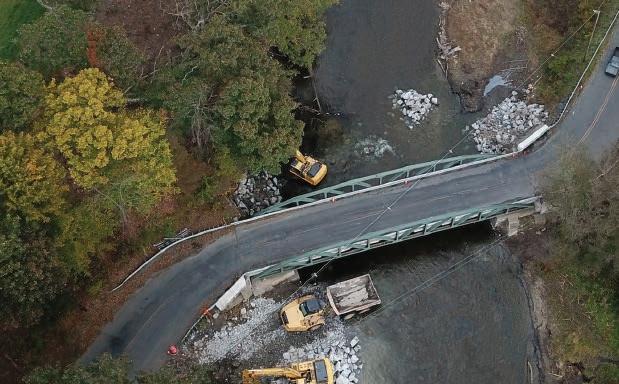
3 minute read
level-funded medical programs
PIPE CLEANING, LLC

• Jet Vac cleaning of 6" to 72" pipe lines and box culverts • Digital TV inspections of storm and sanitary lines from 4" to 72" including service laterals. This service can also include a DVD and comprehensive computer generated report. • Air and Mandrel testing for sanitary sewer systems • Water pressure testing for water distribution systems • Manhole vacuum testing • Catch basin and manhole cleaning • Storm water quality system maintenance • Hydro and vacuum excavation • Hydro excavation test pits in order to locate existing utilities without conventional digging • Hydro Vac cleaning of silted rip rap aprons and storm water spillways • Interior pipe repair

We can provide the services you require to comply with New Jersey's storm water management regulations.

dam removal: freeing new jersey's rivers
By: beth styler barry
People have been building dams for almost five thousand years, first to create water storage for livestock and irrigation, to harvest ice when climate allowed, and then to satisfy the need for mechanical power. In New Jersey, dams have been built for all these reasons for over 250 years. There are now over 1,700 regulated dams in New Jersey and several hundred more dams that do not meet the regulation requirements. All dams, regulated or nonregulated, are candidates for removal should their owners decide to rid themselves of maintenance costs or liability and foster the ecological benefits that dam removal can provide to a river system.
Forty-three dam removals have taken place in New Jersey since 1985, with the number per decade increasing from seven in the 1990s to 30 in the last decade. As is the case around the nation, dam removal in New Jersey is increasing year after year. This increase in removals can be attributed to structural aging, which incurs costly repairs to meet modern Dam Safety standards, as well as dams’ increasing obsolescence and a growing awareness of the huge ecological uplift to a river system that dam removal provides.
Dam removal projects include all the elements of typical building, sitework, or infrastructure construction; however, these projects come with the added challenges of working in, or right on the banks of, a river or stream. Dam removals vary greatly in difficulty and scope. Location is a factor, whether it is in a state park
or city center. The dam’s existing use can range from obsolescence to actively generating hydropower. To further the challenge, the impounded river or dam itself might be crossed by utilities such as power, sewer, or gas lines that could be exposed by the removal of

A crew reinforces a new bank following a dam removal. An articulating off-road truck works along with two excavators to install scour protection up and downstream of a county bridge.
the dam. Removal could also expose the foundations of bridges, homes, or businesses, so design plans must protect such nearby infrastructure.
Beginning a dam removal project requires several permits. The range of permits reflects the special conditions present when working in state waterways and, maybe for the first time, construction schedules will need to align with seasonal fish migration or spawning. Permits needed will likely include a Soil Erosion Control Permit, NJDEP Dam Safety Construction Permit, NJDEP Freshwater Wetlands General Permit 18, and a NJDEP Fish & Wildlife Water Lowering Permit. Because the average age of a dam in New Jersey is well over 50 years, the project sponsor will likely need to work with the State Historic Preservation Office as well. Depending upon the location of roads, bridges, and other infrastructure, additional permits might be needed from the NJ Department of Transportation (DOT) or the County Engineering or Bridge Department. Using federal funding might require preparation of National Environmental Protection Act (NEPA) compliance documentation.
Not surprisingly, this type of work can require a lot of specialized equipment and skills. A hydraulic hammer with a snorkel attachment used with compressed air enables the hammer to break up concrete in water depths exceeding 2.5 feet without damaging the hammer. A hydraulic thumb attachment for excavator buckets is essential to pick up, move, place, or load rock and broken concrete efficiently. It is not unusual to find a mid-sized to large dam, especially one built in the 1950s or later, reinforced with sheet piling, so a hydraulic sheet piling extractor coupled to an excavator is









